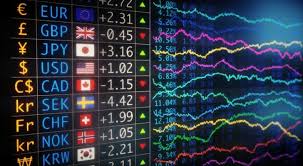
In the world of finance, few markets are as dynamic and complex as forex exchange trading trading-terminal.com. With a daily trading volume exceeding $6 trillion, the foreign exchange market (forex) is the largest and most liquid financial market globally. This article aims to provide you with a comprehensive overview of forex trading, including its fundamentals, strategies, risks, and how to get started successfully. Let’s delve into the fascinating world of forex trading.
Understanding Forex Exchange Trading
Forex exchange trading involves the buying and selling of currencies in pairs. Unlike the stock market, where shares of companies are traded, forex trading focuses on currency pairs such as EUR/USD (Euro/US Dollar), GBP/JPY (British Pound/Japanese Yen), and USD/JPY (US Dollar/Japanese Yen). Traders speculate on the direction these currency pairs will move by purchasing or selling them. For instance, if you anticipate that the Euro will strengthen against the Dollar, you’d buy the EUR/USD pair. Conversely, if you believe the Euro will weaken, you’d sell the pair.
Key Concepts in Forex Trading
| Term | Definition |
|---|---|
| Currency Pair | A quotation of two different currencies, where one currency is quoted against the other. |
| Pip | The smallest price move that a given exchange rate can make based on market convention. |
| Leverage | A financial tool that allows traders to control a larger position than their initial capital would allow. |
| Spread | The difference between the bid price and the ask price of a currency pair. |
The Structure of the Forex Market
The forex market operates 24 hours a day, five days a week and is split into different trading sessions based on major financial centers around the world, including London, New York, Tokyo, and Sydney. This continuous operation allows traders to react swiftly to market news, geopolitical events, and economic indicators that can affect currency values.
Understanding the structure of the market is crucial for successful trading. Forex trading is mostly conducted over the counter (OTC) through electronic networks and does not have a centralized exchange. Traders can access the forex market via brokers, which act as intermediaries between traders and the market.
Forex Trading Strategies
Developing a successful trading strategy is fundamental in forex trading. Here are some common approaches:
- Scalping: This strategy involves making small profits on minor price changes, typically over a very short time frame.
- Day Trading: Day traders open and close positions within the same trading day to capture short-term price movements.
- Swing Trading: This medium-term approach takes advantage of price swings by holding positions for several days or weeks.
- Position Trading: Position traders utilize long-term trends and may hold trades for weeks, months, or even years.
Risk Management in Forex Trading
Forex trading can be highly profitable, but it also comes with a significant risk. Effective risk management strategies are essential for preserving capital and maximizing potential gains. Here are some key strategies:
- Use Stop-Loss Orders: This allows traders to limit their losses by closing a position at a predetermined price level.
- Proper Position Sizing: Determine how much of your capital you are willing to risk on each trade and size your positions accordingly.
- Diversification: Avoid putting all your capital into one currency pair; diversify your investments across different pairs to spread risk.
- Stay Informed: Keep up-to-date with economic news and market trends to make informed trading decisions.
How to Get Started with Forex Trading
For those interested in embarking on a forex trading journey, here are the steps to help you get started:
- Educate Yourself: Take the time to learn the basics of forex trading, including currency pairs, trading strategies, and market analysis.
- Choose a Reputable Broker: Research various brokers and select one that offers a trading platform, low fees, and good customer support.
- Open a Trading Account: Once you choose a broker, you will need to open a trading account, typically offered in various types, such as demo or live accounts.
- Practice with a Demo Account: A demo account allows you to practice trading without risking real money while you familiarize yourself with the trading platform.
- Start Trading: When you’re comfortable with your skills, you can start trading with real money, ensuring you apply sound risk management practices.
Conclusion
Forex exchange trading offers vast opportunities for traders willing to put in the effort to learn and develop their skills. While the potential for profit is significant, it is equally important to recognize the risks involved. By educating yourself, creating a sound trading strategy, and following risk management principles, you can navigate the forex market effectively. With diligence and practice, seasoned traders skills evolve, and their understanding of market dynamics deepens, ultimately leading to greater success in currency trading.


Recent Comments